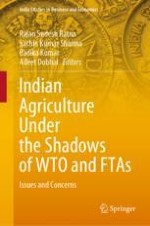2021 | OriginalPaper | Buchkapitel
8. Evaluating the Role of Subsidies in Sustainable Agriculture: A Case Study of India
verfasst von : Anjali Tandon, Roopali Aggarwal
Erschienen in: Indian Agriculture Under the Shadows of WTO and FTAs
Verlag: Springer Singapore
Aktivieren Sie unsere intelligente Suche, um passende Fachinhalte oder Patente zu finden.
Wählen Sie Textabschnitte aus um mit Künstlicher Intelligenz passenden Patente zu finden. powered by
Markieren Sie Textabschnitte, um KI-gestützt weitere passende Inhalte zu finden. powered by
